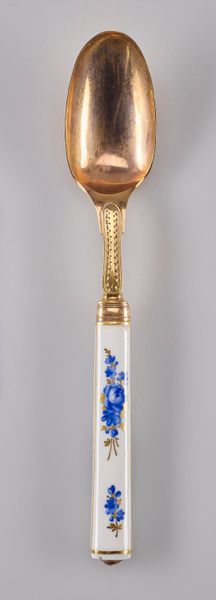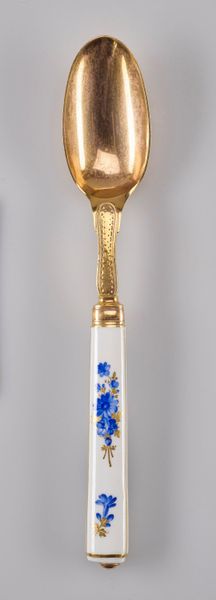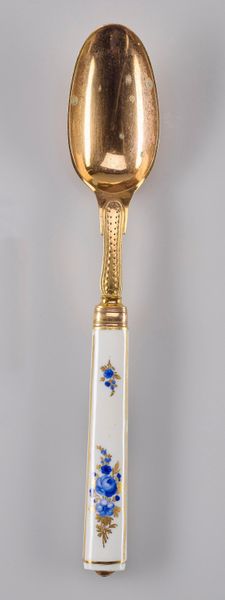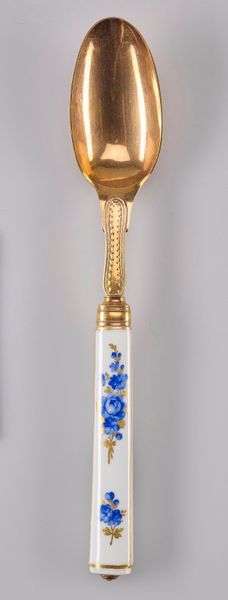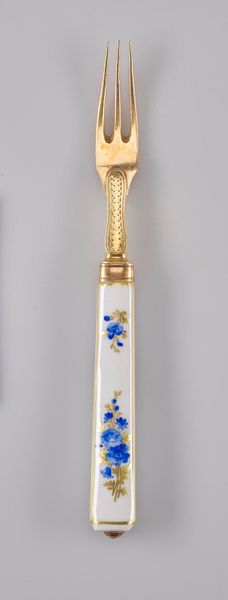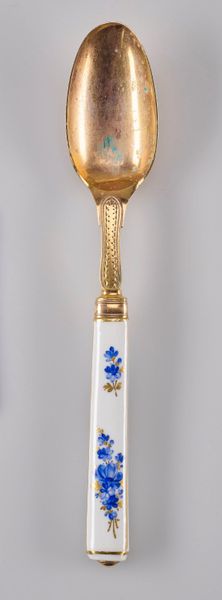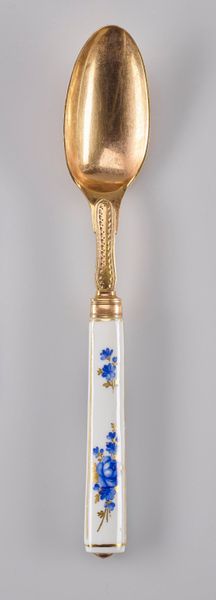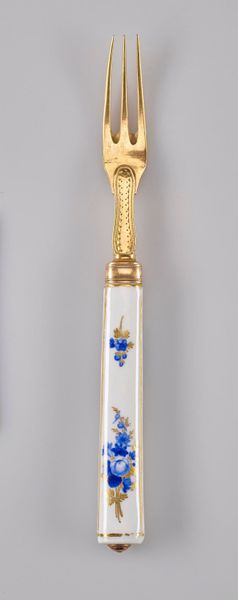
ceramic, hard-paste-porcelain
#
circular oval feature
#
germany
#
wedding photograph
#
3d printed part
#
rounded shape
#
ceramic
#
hard-paste-porcelain
#
jewelry design
#
virtual 3d design
#
round design
#
retro 'vintage design
#
product design photgrpaphy
#
3d shape
Copyright: Public Domain
Editor: We’re looking at a fork, created around the 18th century by the Meissen Porcelain Factory. It's made of hard-paste porcelain. It feels surprisingly ornate for a piece of cutlery; the floral decoration almost seems too delicate for everyday use. What do you see in this piece? Curator: The mere existence of a porcelain fork speaks volumes. Meissen porcelain was highly prized, reflecting wealth and status. Owning a set like this wasn't just about eating; it was about performing a certain social role. Porcelain transformed the act of dining into a spectacle. It forces you to ask: who was invited to *this* table? Editor: So, it's less about function and more about...symbolism? Curator: Exactly. The aristocracy were investing in refined dining customs to separate themselves further from the lower classes. This seemingly simple fork actively helped construct those social boundaries. The delicate florals, painted with such care, become emblems of aristocratic leisure and privilege. Editor: That’s interesting. It’s like, every bite becomes a performance. Do you think the artistry contributes or distracts from this function? Curator: A bit of both, maybe? On one hand, the artistry elevated dining to a higher art. However, by making the tools themselves precious objects, they introduced a certain artificiality, possibly even anxiety, into something as simple as eating a meal. What does such an exquisite object mean in modern society? Editor: It does make you rethink everyday objects. Now I’m wondering about the messages our own tableware sends. Thank you.
Comments
No comments
Be the first to comment and join the conversation on the ultimate creative platform.

